An example of the great efforts it’s going to is its oxen project, which gives value to a couple of native Tyrolian breeds, Original Braunvieh and Grauvieh, that have been largely supplanted by other dairy cows.
Started several years ago, the project sees Alois Lageder working in cooperation with an organic cheese dairy, Käserei Englhorn in Val Venosta. The male cattle, which are useless to the dairy industry, were previously sent to foreign fattening farms to become part of mass meat production. Now, they live and graze outdoors all year round, which is unique for an Alpine region like Alto Adige.
Every year, after the harvest, the cattle are brought down from the Alpine pastures to the vineyards in Bassa Atesina and Rovereto, where they are still able to find food for the winter because of the milder climate. Grazing in the vineyards, they provide more biodiversity and fertility and help the family get closer to their closed-loop ideal.
In spring, once the vines have started to bud, the oxen are taken out of the vineyards and put in the fallow fields.
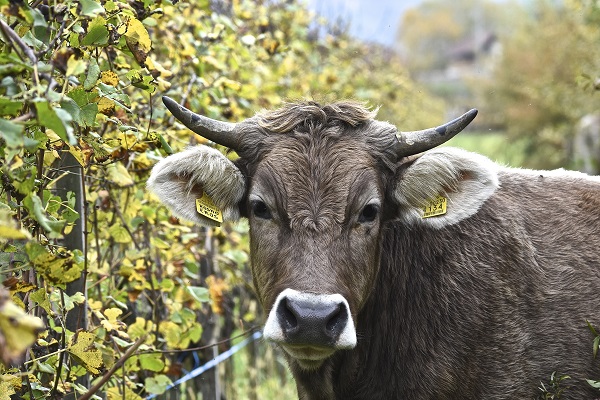
The oxen (like the one above) can spend three or four years alternating between the alpine pastures and vineyards. When their time is up, they are slaughtered on the farm, in less stressful and familiar surroundings. “The respectful slaughtering completes the approach of organic, near-natural and species-appropriate farming,” according to family member Helena Lageder.
The organic meat from these oxen is processed from nose to tail by the chefs at the winery’s organically-certified restaurant, Paradeis, which reopened in May and is closed on Saturdays to give chef Flora Hohmann and her team the time they need to process fresh products from the farm.
Everything the farm produces, including potatoes, tomatoes, corn, olives, pigs and chickens, is destined for the restaurant and shop.
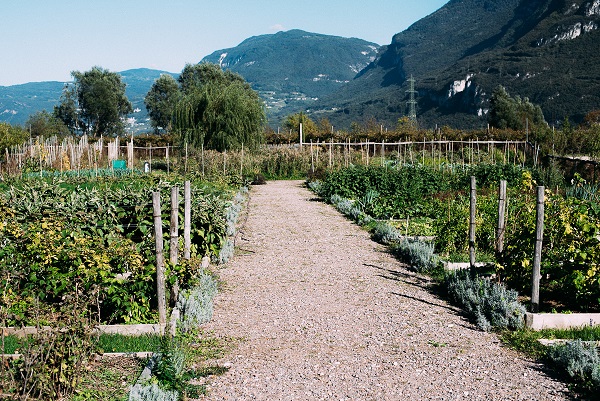
Among the 55ha of vines is a beautiful garden, GrandOrto (above), which supplies seasonal vegetables for the restaurant’s dishes.
The aim of the wine and dishes is to tell the story of this part of Alto Adige in “a very purist way”; to reflect “the unique location of the Paradeis, between the cliffs of the Fennberg and the scree of the Etsch Valley; between Alpine barrenness and the first Mediterranean hints”.
In addition to the vegetable garden, the estate bolsters its biodiversity with ground cover plants, olive groves, hedges and animals such as sheep, peacocks, and geese.
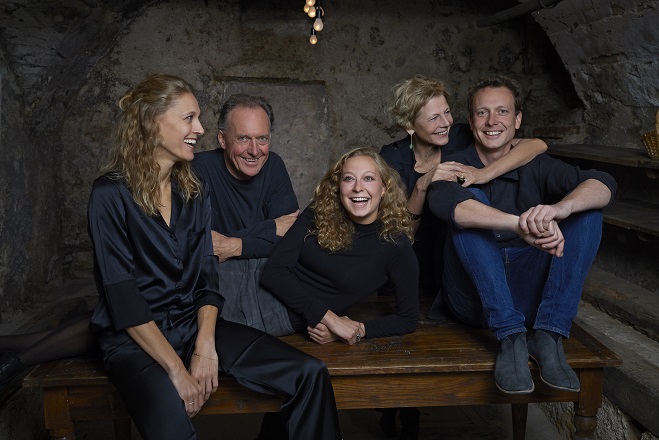
The vision of the sixth generation now running Alois Lageder is to develop the estate into “a holistic agricultural entity – a symbiotic coexistence of plants, animals and people”.
New plantings
Some of the fields that had been left fallow for three years were planted with Chardonnay vines earlier this year.In Cortina sulla strada del vino, where Syrah, Cabernet Sauvignon, Merlot and Ruländer once grew, about 3,100 Chardonnay vines were planted.
“We decided to take this path because the quality of the (existing) grapes did not convince us,” Helena says. “Moreover, they were more susceptible than other grape varieties in the same vineyard – long story short, they were not ideal varieties for this location.”
Chardonnay is one of the most important grape varieties at Alois Lageder and will continue to play an important role in the future. “Chardonnay copes well with high temperatures even in lower altitudes,” Helena (centre above) explains.
In the new vineyards, they have boosted biodiversity with “a wild fence” created from a variety of different plants. “We used a mix of seeds whose flowers are useful for insects and we planted various Mediterranean herbs (rosemary, lavender, thyme) at the ends of the rows,” Helena tells Canopy.
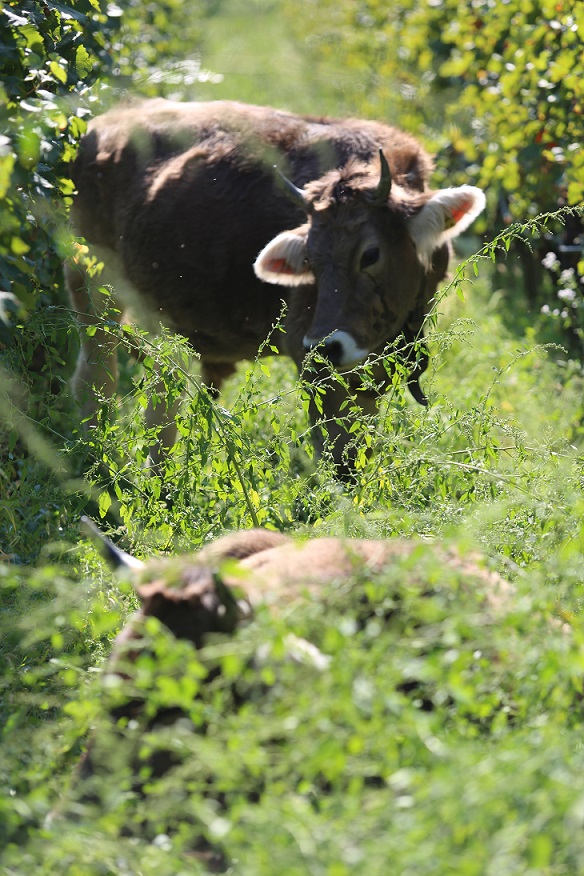
Damage?
Looking at the photos of the large oxen in the vineyards, I wonder if they ever damage the vines. “They seem rather big to be wandering amongst the rows of vines,” I comment.“Sure, they are huge animals and love to scratch themselves on the vines for example,” Helena replies. “But out of this we’ve learned that we need to provide them with a better alternative for scratching – a solar-powered scratching machine. Since then the damage is very low.”


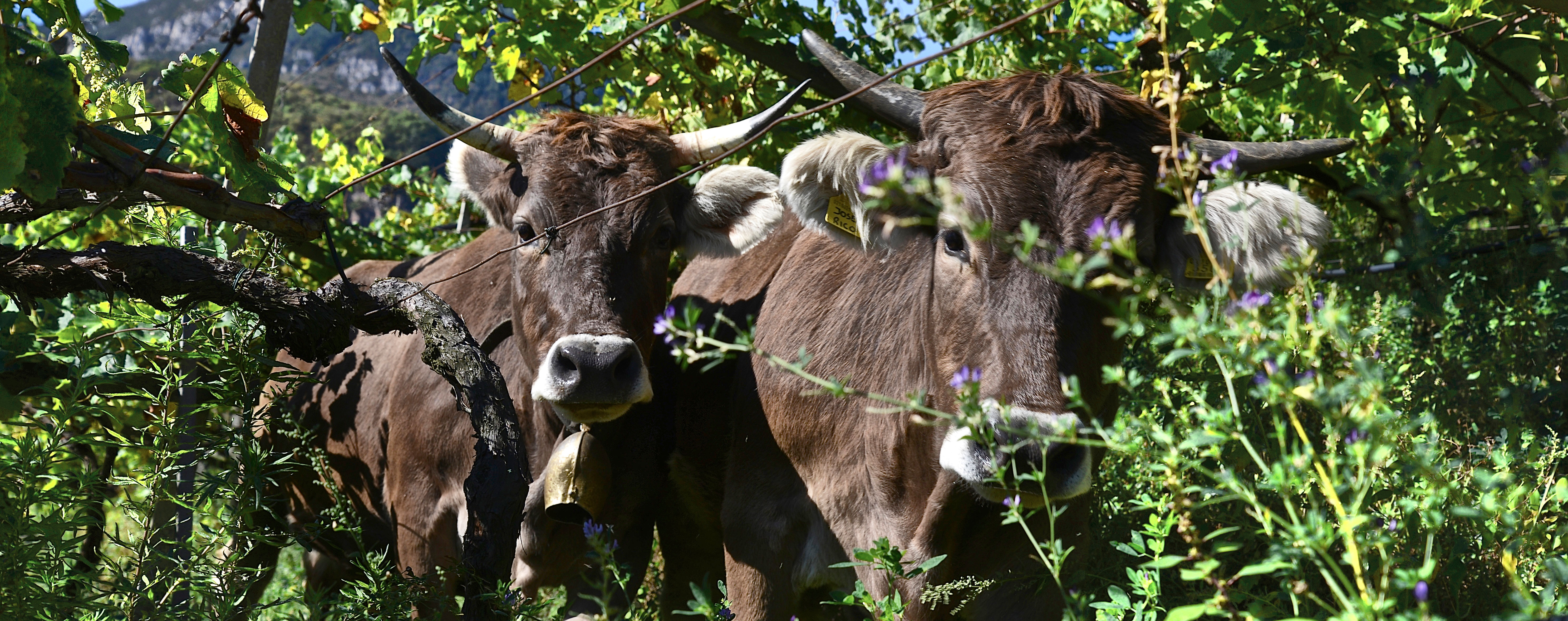










.png)






